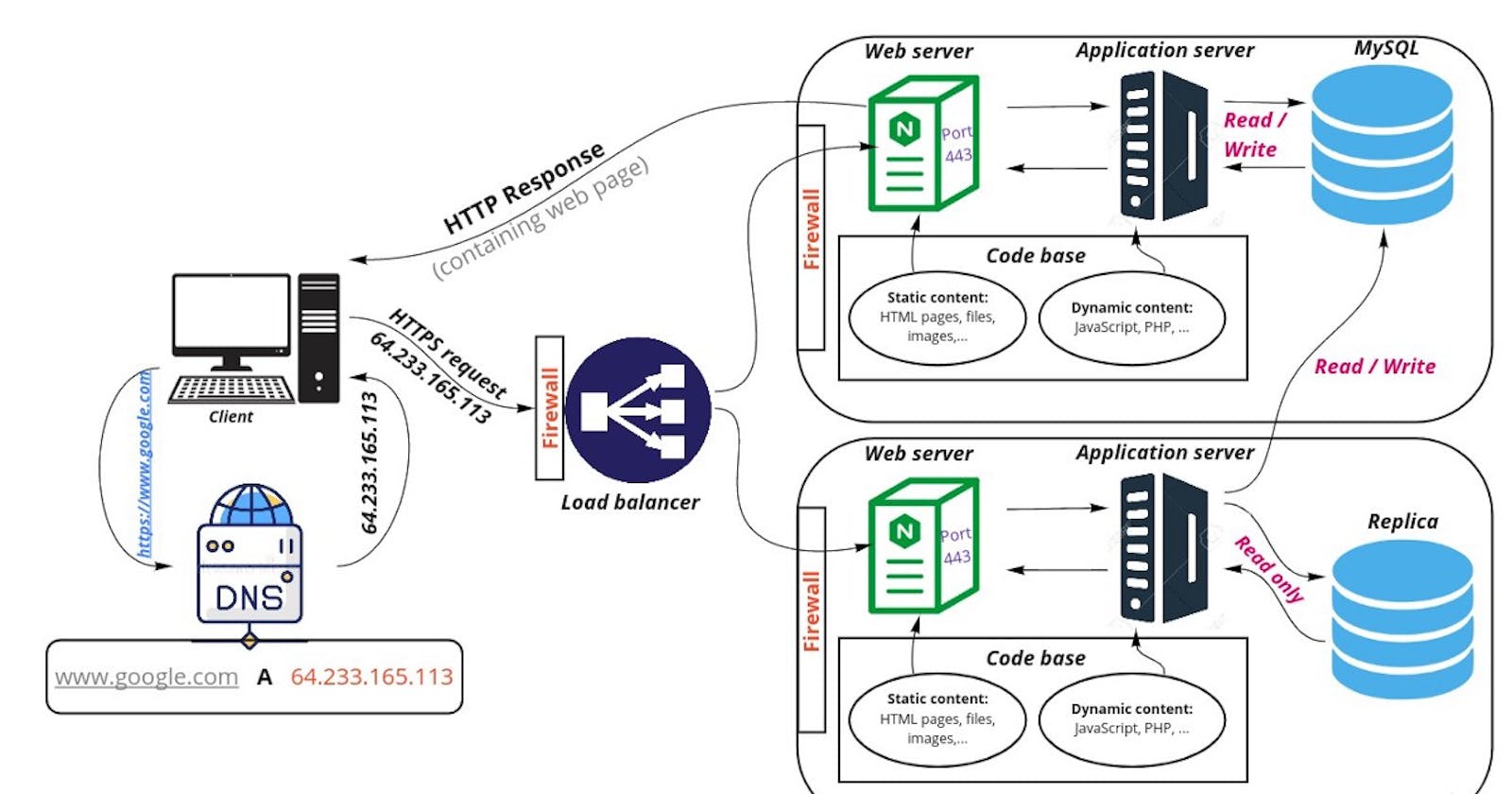What happens when you type https://www.google.com in your browser and press Enter
Table of contents
No headings in the article.
When you type "google.com" into your browser and press enter, a series of events occur to retrieve and display the Google homepage on your screen. In this blog post, we will explain these events by breaking down the concepts of the Domain Name System (DNS) request, Transmission Control Protocol/Internet Protocol (TCP/IP), Firewall, HTTPS/Secure Sockets Layer (SSL), Load-balancer, Web server, Application server and Database.
The first step in this process is the DNS request. When you type "google.com" into your browser, your computer needs to know the IP address of the server that hosts the Google website. The DNS is a system that converts domain names (such as google.com) into IP addresses. Your browser sends a request to a DNS server to resolve the domain name to an IP address. Once the IP address is obtained, your browser can then establish a connection with the server.
Next, your browser uses Transmission Control Protocol/Internet Protocol (TCP/IP) to establish a connection with the server. TCP/IP is the standard protocol used for communication on the internet. It is responsible for breaking up your request into small packets and sending them to the server. The server then receives the packets and reassembles them into the original request.
Once the connection is established, the request goes through a Firewall. A firewall is a security system that monitors and controls incoming and outgoing network traffic. It checks the request to make sure it meets certain security criteria before allowing it to pass through to the server.
The request then reaches the Load-balancer, which is responsible for distributing incoming network traffic across multiple servers. This is done to ensure that no single server becomes overwhelmed and that the load is distributed evenly among all servers.
After passing through the load-balancer, the request reaches the Web server. A web server is a software that handles HTTP requests and serves up web pages. The web server receives the request, processes it, and sends back the necessary files to display the webpage.
The next step is Application server, where the web server passes the request to the application server. The application server is responsible for executing any server-side logic, such as querying a database, performing calculations, or generating dynamic content.
Finally, the request may reach the Database, where the application server queries the database to retrieve any necessary information. The database then sends the requested information back to the application server, which in turn sends it back to the web server. The web server then sends the final response back to the browser, which then renders the page and displays it on your screen.
It's important to note that HTTPS (HTTP Secure) is used for secure communication during this process. HTTPS encrypts the data being transmitted between the browser and the server, ensuring that it cannot be intercepted or read by anyone else. This is done using an SSL (Secure Sockets Layer) or TLS (Transport Layer Security) certificate.
In summary, when you type "google.com" into your browser and press enter, your browser sends a DNS request to resolve the domain name, establishes a connection using TCP/IP, request goes through a firewall for security check, reaches the load-balancer, web server, application server and database to retrieve and send back the necessary files to display the webpage and the HTTPS/SSL is used to encrypt the data during transmission. All these steps happen in a matter of milliseconds allowing you to interact with the page and perform tasks such as searching the web or signing into your Google account.
